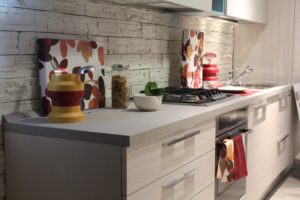Maximizing Space with Elevation Tiles Design

The art of visually stretching a space is a profoundly satisfying endeavour, and elevation tiles are a powerful tool for achieving this. As their name suggests, these tiles elevate a room’s aesthetic, creating an illusion of greater size and openness. Choosing the right elevation tiles is essential for transforming your home to look and feel larger.
This guide will provide you with practical, expert tips to help you select the best options for your space, style, and budget.
What Are Elevation Tiles?
Think of the elevation tiles design as the face of your house. While these tiles traditionally adorn external walls or front facades, modern design has blurred those lines. Today, they’re making their way into balconies, boundary walls, and even indoor accent spaces.
Unlike regular wall tiles that are often flat and glossy, elevation tiles usually have textured, matte, or stone-like finishes. They add depth, personality, and structure, instantly upgrading a dull exterior or a basic corner into something Instagram-worthy. When used smartly, they don’t just beautify but also shape perception.
How Elevation Tiles Create the Illusion of Space?
Elevation vitrified tiles are a powerful design tool, expertly manipulating light, shadow, and pattern to shape a room’s perception. Vertical tile patterns can be used to increase a room’s perceived height. Conversely, horizontal textures help to broaden the space visually.
3D elevation tiles, those with tactile designs, cast subtle shadows, which break the monotony and give surfaces more volume and interest. By drawing the eyes upwards or outwards, the design naturally makes a space feel larger than it is.
Premium brands like Simpolo Tiles and Bathware offer stunning collections, such as Persian Leaf or Jewel Khakhi, that are designed to leverage these visual effects. They elevate small balconies, tiny terraces, and compact entryways into spaces that appear more expansive.
Choosing the Right Finish for Maximum Impact
The texture and finish of elevation tiles are just as important as the design. Matte finishes reduce glare and are more subtle, blending beautifully with natural light. Rough finishes, especially in stone or brick effects, can bring an earthy, grounded vibe to a tight urban setting.
If you’re dealing with smaller spaces, avoid heavy patterns or overly dark colours. They tend to visually ‘close in’ the space. Instead, opt for neutral tones, soft greys, beiges, or even warm terracotta that creates an illusion of openness while maintaining elegance.
Choosing Tiles for Indoor Spaces:
Traditionally, elevation tiles have served as a feature of exterior design. However, many homeowners are now bringing them indoors to create dynamic accent walls, particularly in living rooms and stairwells. This application adds visual depth to a space without making it feel crowded.
For example, a textured panel behind a TV unit or a faux-brick corner in your dining room can easily become a captivating focal point. Moreover, these tiles offer lasting durability. They are as durable, water-resistant, and designed to handle Indian weather swings as they are about design.
Choosing the Right Size and Layout
Choosing the size of your elevation tiles isn’t just about aesthetics; it’s also about proportion.
- Large tiles with minimal joints can make a small wall appear seamless, giving a sense of continuity and space. On the other hand, smaller tile modules can be used to build patterns, textures, or visual breakpoints in a larger facade.
- Using varied tile sizes from the same colour family is an effective way to create layered interest without causing visual clutter. Many brands now offer modular elevation designs that are prearranged for this purpose.
- Using vitrified tiles as a complementary feature to your elevation design can help you create a more cohesive indoor-outdoor flow, especially in semi-open areas like balconies and patios.
Virtual Tools to Help You Get it Right
It can be difficult to visualise the elevation tiles design once it’s on your wall. This is why transformative tools like the Digital Showroom and Virtual Space Creator by premium brands like Simpolo Tiles and Bathware are so valuable. They allow you to see how different elevation tiles look across facades, balconies, and feature walls, all in realistic 3D.
It also lets you design your space in ultra-realistic previews and tweak the furniture, lighting, and fixture details so you can plan your space holistically. All from your phone or laptop, without stepping outside.
Conclusion
The design of a home’s exterior and key accent walls serves a dual purpose: to create a compelling first impression for guests and to offer a refined personal sanctuary. Elevation tiles allow you to achieve a home that feels spacious and beautifully refined.
Creating a polished, high-end look is entirely within reach, even without a significant budget. You can use premium vitrified tiles for the flooring and beautifully complement them with elevation tiles for a single focal wall. This strategic approach creates a powerful visual statement that gives your space a luxurious feel, proving that exceptional design can be both stunning and cost-effective.






